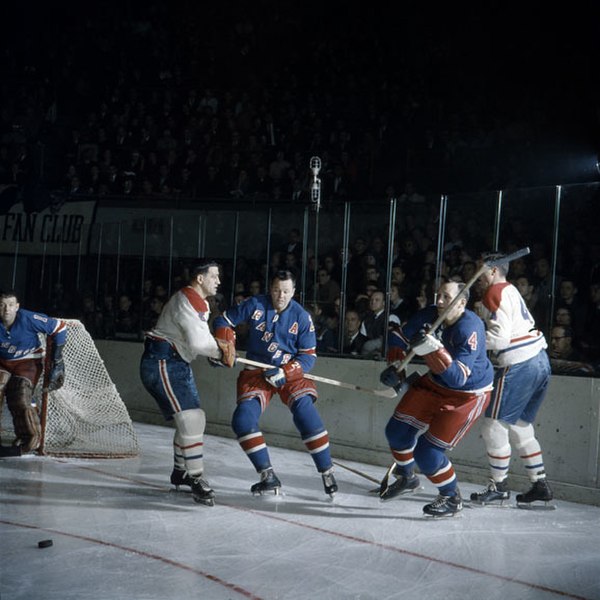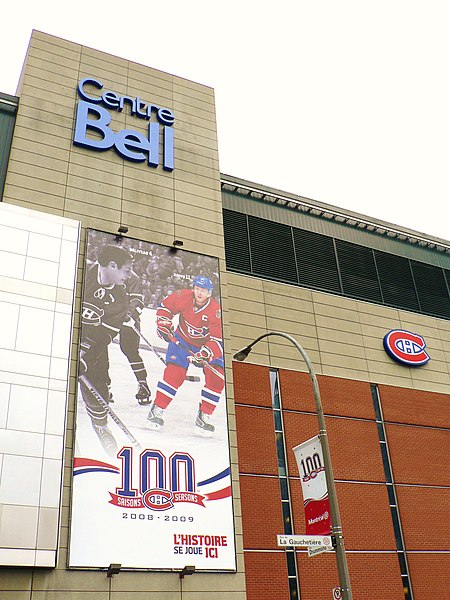Bell Centre formerly known as Molson Centre, is a multi-purpose arena located in Montreal, Quebec, Canada. Opened on March 16, 1996, it is the home arena of the Montreal Canadiens of the National Hockey League (NHL), replacing the Montreal Forum. It is owned by the Molson family via the team's ownership group Groupe CH, and managed via Groupe CH subsidiary Evenko.
Bell Centre in 2017
Aerial view in 2013
Inside the arena during a hockey game between the Montreal Canadiens and the Buffalo Sabres
The newly fitted electronic scoreboard in 2008
The Montreal Canadiens, officially le Club de hockey Canadien and colloquially known as the Habs, are a professional ice hockey team based in Montreal. The Canadiens compete in the National Hockey League (NHL) as a member of the Atlantic Division of the Eastern Conference. Since 1996, the team has played its home games at Bell Centre, originally known as Molson Centre. The Canadiens previously played at the Montreal Forum, which housed the team for seven decades and all but their first two Stanley Cup championships.
Game between the Canadiens and the New York Rangers in 1962.
The Bell Centre with banners celebrating the Montreal Canadiens centennial.
The Canadiens mascot, Youppi!, poses for photographs at a Rogers Media event
Some of the retired numbers at Bell Centre, photographed in 2010








